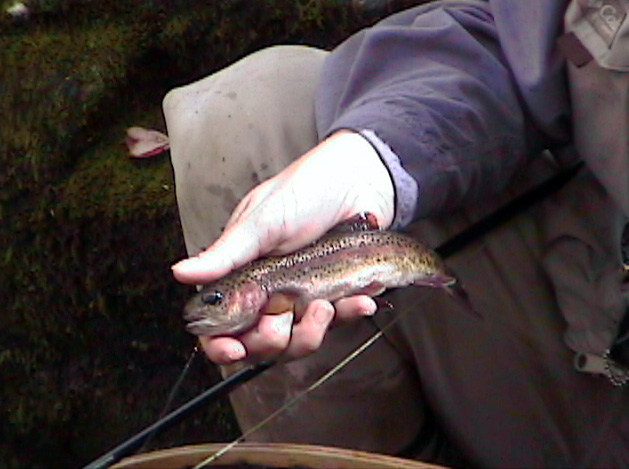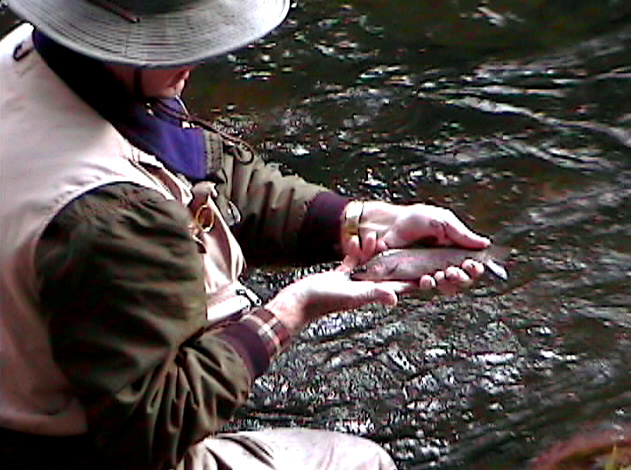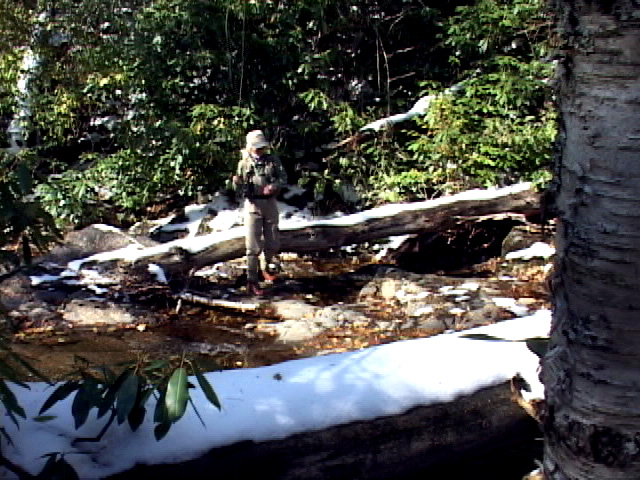
coldest months. Snow is common
in the high elevations. It is very
difficult to catch trout when the
water is below 40 degrees.
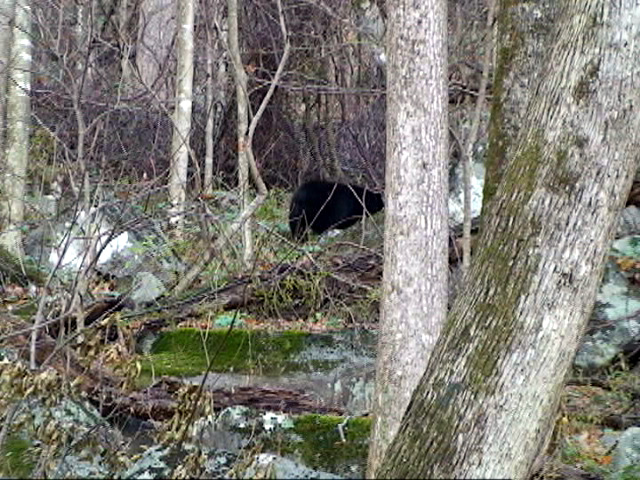
around looking for food in around
looking for food in December. It’s a
good time to see one. Cubs are
born in January
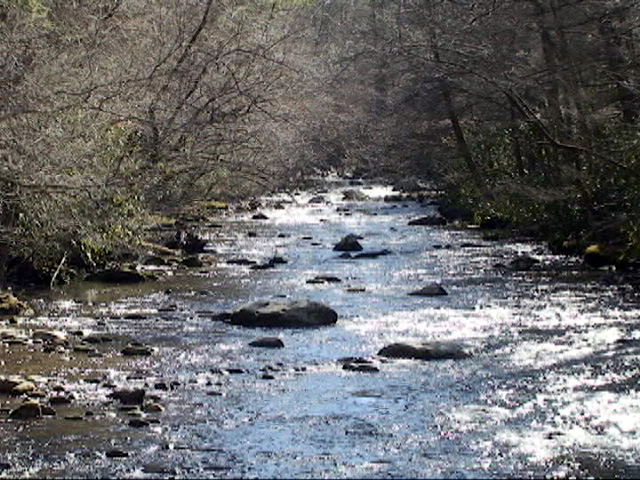
trees in January. This is the Little
Pigeon River in the Sugarlands
area of the park near the main
entrance at Gatlinburg.
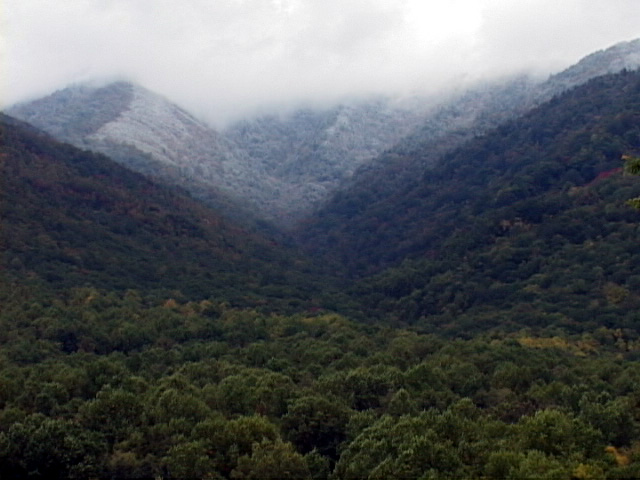
the lower elevations.
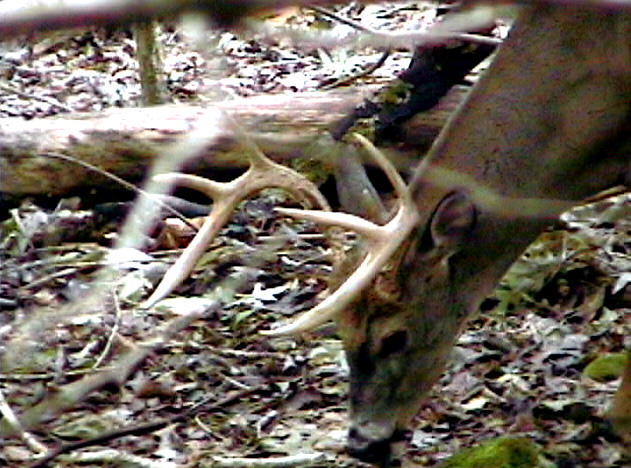
When To Come and What To Expect:
The first thing you need to consider when you are planning a trip to fly fish the Great Smoky Mountains National Park is the time of year you are going to fish. The fly fishing opportunities vary greatly depending on the season. We have a complete seasons section in this website that tells a little about the seasons, water levels and goes over the hatches you can expect to occur. We suggest you read it in addition to this section on planning your trip. The purpose of these articles is to simplify what you can expect from a fly-fishing trip during the various months of the year. Please read our water temperature article.
January, February and March:
January:
January is usually the coldest month of the year. Temperatures of the water and air can vary drastically. There are only a few warm days. The Black Bear cubs are born in their dens during January. Fish have a very low metabolism in cold water. If the water is less than forty degrees, their need for food is greatly reduced and they eat very little. It is the month you are most likely to see snow, especially in the higher elevations. One of the best streams in the park, Abrams Creek, is feed by underground spring water that keeps the upper part of the stream a little warmer than the others. You can catch trout there anytime of the year.
Fishing during the time the woods are covered with snow can be a very enjoyable experience provided you dress right. However, unless you just can’t wait, or maybe you like cold weather, or want to come often, we suggest you choose another time to fish Great Smoky Mountains National Park. Even on warm days your productive fishing time would be limited to only two or three hours. If the water is cold like it normally is, then wading can be very dangerous. It’s not a good time to fall in the water. Your fishing would be limited to streams in the lower elevations. Those streams in the higher sections of the park would usually be far to cold for productive fishing.
February:
The first part of February usually continues the cold weather. The big difference in it and January is that near the end of February there will usually be a few warm days. You certainly can’t count on it but it is very possible there will be a couple of nice, two or three day periods of time to fish. Your most productive fishing time is usually limited to only three or four hours a day. If you only live a short distance away, and you see the long range forecast is calling for warm weather, you may want to come. It is even possible for the Blue Quill and Quill Gordon mayflies to hatch by the end of February. There can also be a very good hatch of Little Black Caddis by the end of the month and catching trout on the surface is possible. As long as the water is cold, wading will continue to be dangerous. On the good side of the considerations is the fact you will have most any location you choose to yourself. If the conditions do become favorable, meaning for example, the water warms some or a hatch of Blue-winged Olives takes place, it is possible that you can catch several trout. If you happen to come at just the right time, February can be great but don’t count on it unless you can get here fast.
March:
The month of March usually brings a big change in the weather. The temperatures can quickly change from cold to warm with each passing cold front. If you live a long distance away and you can only fish the Smokies a couple of times a year, then you may want to choose another month. If you live fairly close and you trust the long range weather forecast, then you may want to choose a date in March for your fly fishing trip. Even when a cold front passes, it usually last only two or three days before the weather turns warm again. The red bud trees will bloom signaling the beginning of spring. Hatches will be getting well underway and the water temperature can be in the fifties. Rainbow trout will begin to spawn during the month of March. Fishing can be great but again, if you can only visit a few times a year, we suggest you wait until a little later on in the year. March is usually very windy. This can create problems for any angler but especially for those just getting started. Another consideration is that your fishing time is reduced by the cold mornings. On the average day in March, the best fishing usually doesn’t begin until around noon. If you want more time on the water, a warmer time of the year would be a better choice.
Copyright 2011 James Marsh
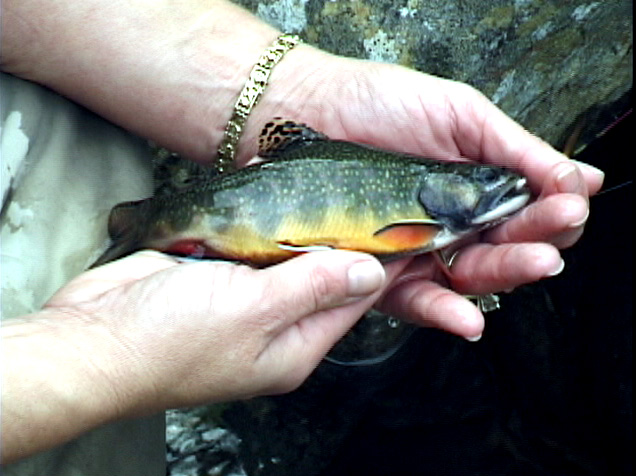
fish nymphs when the water is
very cold. Midge larvae and pupae
imitations work well also. Small
flies produce better.
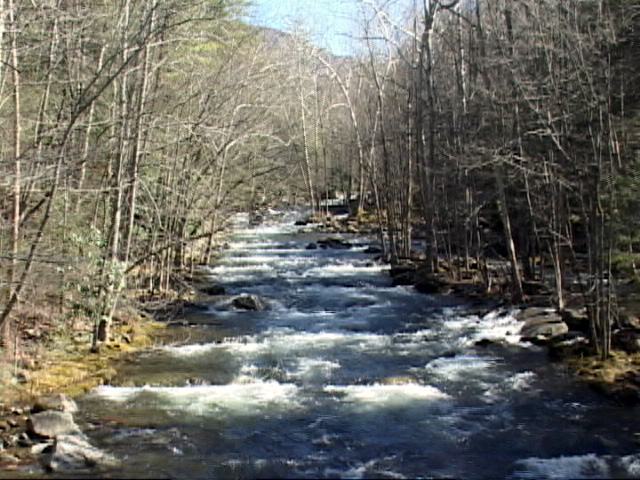
place to catch trout on the little
winter stonefly nymph imitations
during the winter. There are also a
lot of little brown stoneflies in this
section of the river.
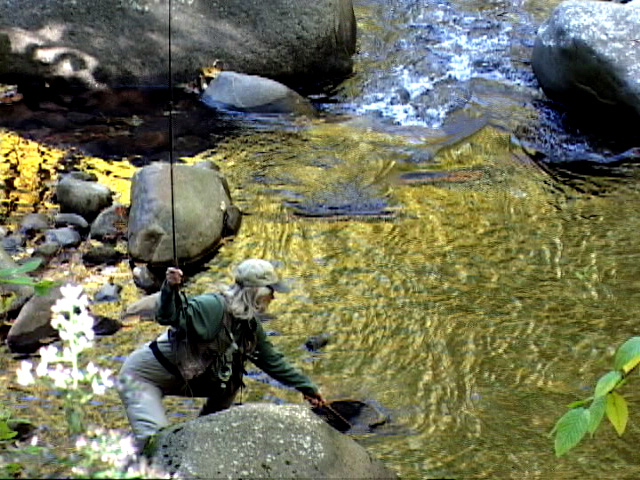
the other on this cool March
morning.
